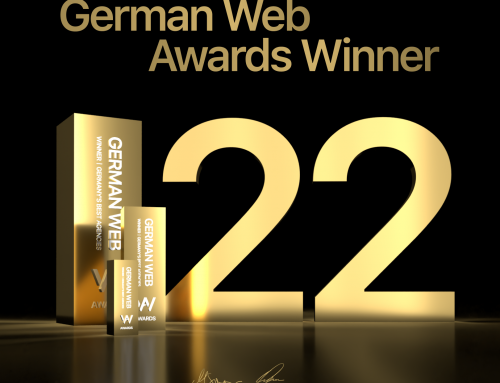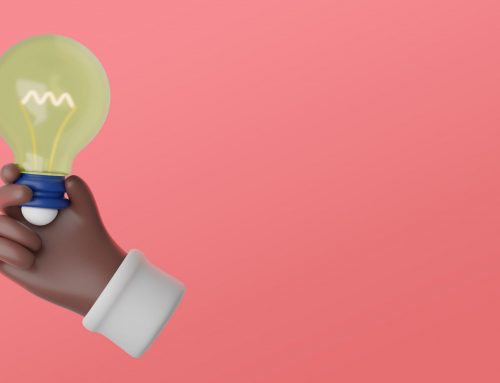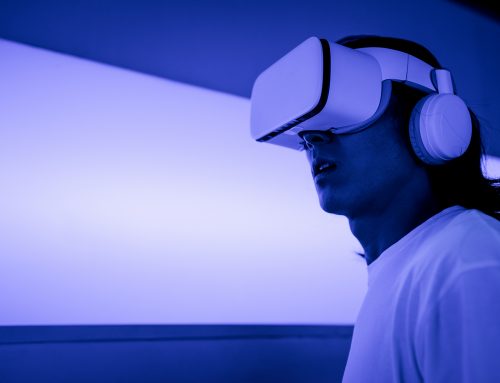Brand Archetypes and how to use them for your brand
Nearly every brand is based on one of the twelve Brand Archetypes. This idea is helpful as an orienting tool for brand managers and marketers to bring brands to life. The Brand Archetypes are the twelve most important and basic of all marketing communications tools. They explain how to create effective brands, how brands work, why people buy brands and which factors are needed for successful brand management.
The Brand Archetypes concept and history:
This concept derives from the idea of the Dynamic Marketing Mix (positioning, product, price, promotion and place) formulated in 1960/61 by Theodore Levitt. The marketing mix is a tool for managers to know what they can control about their market offering, but also what factors are beyond their influence (the four Ps).
According to the Brand Archetypes, brands can be understood as communication structures. This concept balances different aspects of brand management that need to work together: the brand essence or reason-to-be versus the tangible or functional benefits it provides versus the emotional meaning people attribute to it. If done right, these three dimensions form an integrated whole.
The result applies not only to consumer goods brands aiming at customers’ hearts and minds but also to industrial brands which are driven by functionality. So, the Brand Archetypes can be adapted to different business situations and markets.
The Brand Archetypes identify typical ways of building brand communications – taken from real brands.
In other words: They describe what people have done before to make their brands more exciting and authentic. And they tell why it was successful or not.
Using the Brand Archetypes for your brand
Each archetype has its key benefits, strengths and risks. To use them in a structured way, after defining your core values (i.e., how you want to be perceived), you need to consider these three categories while developing your Brand Identity concept, positioning statement, name and logo design (brand book). The most important archetypes in the Brand Archetypes methodology are:
1. The Personality Brand 2. The Value Brand 3. The Benefit Brand 4. The Task & Function Brand 5. The Difference or Differentiation Brand 6. The Security & Safety Brand 7. The Meaningful RelationshipBrand 8. The Service Brand 9.The Style, Image or Lifestyle Brand 10.The Emotional Bonding or Loyalty brand 11.The Intimacy or Passionate RelationshipBrand 12.The Visible Identity or NameBrand
These archetypes are also described as “brand personalities” because people perceive brands that way in their minds’ eye and use them to make sense of their world and also to express themselves through what they buy and where they go (destination).
#1. Brand archetype: The Innocent
An Innocent Brand is perceived as a small, young, friendly and authentic start-up initiative that creates happiness. The Innocent Model promises the consumer a positive lifestyle that is healthy, natural and responsible. The Precursor of this type of brand could be Ben & Jerry’s Ice Cream. Many successful global brands have been created following the Innocent model, such as Virgin Airlines, Red Bull and Spotify. An excellent level of transparency characterizes these brands in terms of product quality, design or service.
#2. Brand archetype: The Sage
A Sage brand has something important to say (content, information or entertainment) and for this it uses a trustworthy, individual voice. This type of brand is based on an expert opinion and strong personality. The marketing communication wants to convey the message that “the customer can trust us – we know what we are talking about.” Such brands often have ideas related to science/technology behind them. They want to offer solutions for a specific problem, e.g., Audi with their Quattro technology or Apple’s Ideas about digital lifestyle products – like the iPad and iPhone.
The Precursor of this type of brand archetype could be Mont Blanc Pen Brand in Germany which feeds its customers with knowledge through its seminars around the world related to the brand. Another Precursor might have been the legendary BMW brand with its slogan “The Ultimate Driving Machine.”
This Brand Archetype is also often found in health and pharmaceuticals or other complex products where a high level of expertise is needed to understand the product (e.g., Bosch, Philips, Siemens). In many cases, a combination of Sage and Innocent archetypes can be applied. For example, Google uses the Innocent archetype as well as the Sage archetype for their communication: On one hand, they want to give you all available information about everything at any time through their search engine (Innocent), while on the other hand, it’s an expert who knows something useful for you – like a sage does (Sage).
#3. Brand archetype: The Explorer
An Explorer Brand is associated with freedom. The brand conveys a promise of adventure, risk-taking and discovery. It promises a unique, individual experience that “can’t be found anywhere else.” An Explorer brand creates experiences for the customer by offering him something special he could not get otherwise. Examples include Red Bull, GoPro Camera or Tesla Motors. The Precursor for this archetype might have been Apple’s iPod which brought new functionalities to music while being an individual device that wasn’t available at that time from any other manufacturer – and therefore was different and innovative enough to stand out from the crowd. This Archetype can also be used in combination with Innocent or Sage archetypes.
#4. Brand archetype: The Outlaw
The Outlaw Brand is a brand for rebels, revolutionaries and thinkers. The idea behind this type of brand is that we want to be different from the others. We don’t want to conform and do what everybody does – we are non-conformists! Such brands are never mainstream; they instead offer something unique to the consumer who wants to stand out from the crowd. This might include brands like Apple or Harley Davidson but also more niche products such as Apple’s Mac OS X operating system – which was so not mainstream at that time compared to Windows by Microsoft back then.
#5. Brand archetype: The Magician
The Magician is the brand archetype that exceeds customer’s expectations and always has a solution for the customer. It offers something unique to fulfill customer’s desires or wishes. Examples of brands following this archetype are Amazon, Peugeot, Heinekin and many more. The Precursor might have been Apple again – which offered his customers new possibilities with their products while making them look wonderful on the outside (e.g., iPod)
#6. Brand archetype: The Hero
The Hero Brand is a brand archetype that strives to help others. It promises to do something good for the community – or at least it wants customers to think so. In addition, this kind of brand usually promises quality, trustworthiness and safety. Examples are brands like Audi in Germany (with their clear sense of helping others with their advertising slogan “Audi helps” ) or Rolex – which has never really been associated with a famous person but rather as a reliable watch brand among movie stars and sports stars (e.g., by sponsoring sports events).
#7. Brand archetype: The Lover
The Lover Brand is the brand archetype that expresses love. It wants to be loved by its customers and it promises quality, beauty, safety or whatever else something “loving” might promise. This can, for example, be jewelry brands like Tiffany which has an unmistakable but elegant design language with their products and are aimed at a high-status group of consumers. The Precursor for this type of brand was probably Apple again with his slogan “Think Different.”
#8. Brand archetype: The Jester
A Jester Brand is a brand archetype that stands out with its unusual communication. It tries to be noticed and remembered by being different. This might include brands like Red Bull or Virgin – which have been taking risks in their media campaigns (e.g., Red Bull’s airshow stunts)
The Precursor for this type of brand was probably the Volkswagen Beetle – which stood out from other car manufacturers’ cars at that time through its shape while being associated with “the hippie culture” in the 60s/70s.
#9. Brand archetype: The Everyman
The Everyman Brand is the brand archetype for the “nice guy.” This kind of brand wants to be accepted by all and doesn’t want to leave any customer out. In fact, it tries to serve everybody – or at least most of them. For this type of brand, the Precursor might have been Volvo in Sweden, which was supposed to be available for everyone with its car models (most of which were pretty much standard models with high functional safety combined with a reasonable price).
#10. Brand archetype: The Caregiver
The Caregiver Brand is the brand archetype for brands like Google or Duolingo – which strive to help people in their daily life and want to make them do something they might not usually do. This kind of brand tries to be helpful and solve problems in a creative way for its customers! Examples are Apple’s Appstore with more than 200,000 apps – which made it so easy for everybody to start with app development even if you’re just an amateur (or whatever you want to call yourself)! The Precursor here could have been Dell, one of the first computer manufacturers that thought about being more customer-friendly by delivering computers directly from their warehouses instead of shipping them from company-owned stores.
#11. Brand archetype: The Ruler
The Ruler Brand is the brand archetype for brands that strive to dominate their market. This kind of brand wants to be number 1 in its industry and tries to lead the way. Examples include Samsung, Sony or Audi again – who all have tried hard over the last decades to offer innovative devices with a strong focus on superior quality. The Precursor here could also have been Apple again, which was first introduced at an extremely high price point (while still being worth every penny!). This strategy helped them become so dominant within mobile phones that they are nowadays called “King of Mobile.”
#12. Brand archetype: The Creator
The Creator Brand is the brand archetype for brands that strive to create a new market niche. Examples can be found here as well – like Apple again, which was supposed to be introducing “the iPhone” in 2007 (which turned out to be much more than just a phone!)
Or Google, which was first introduced as an alternative to ordinary search engines.






Leave A Comment